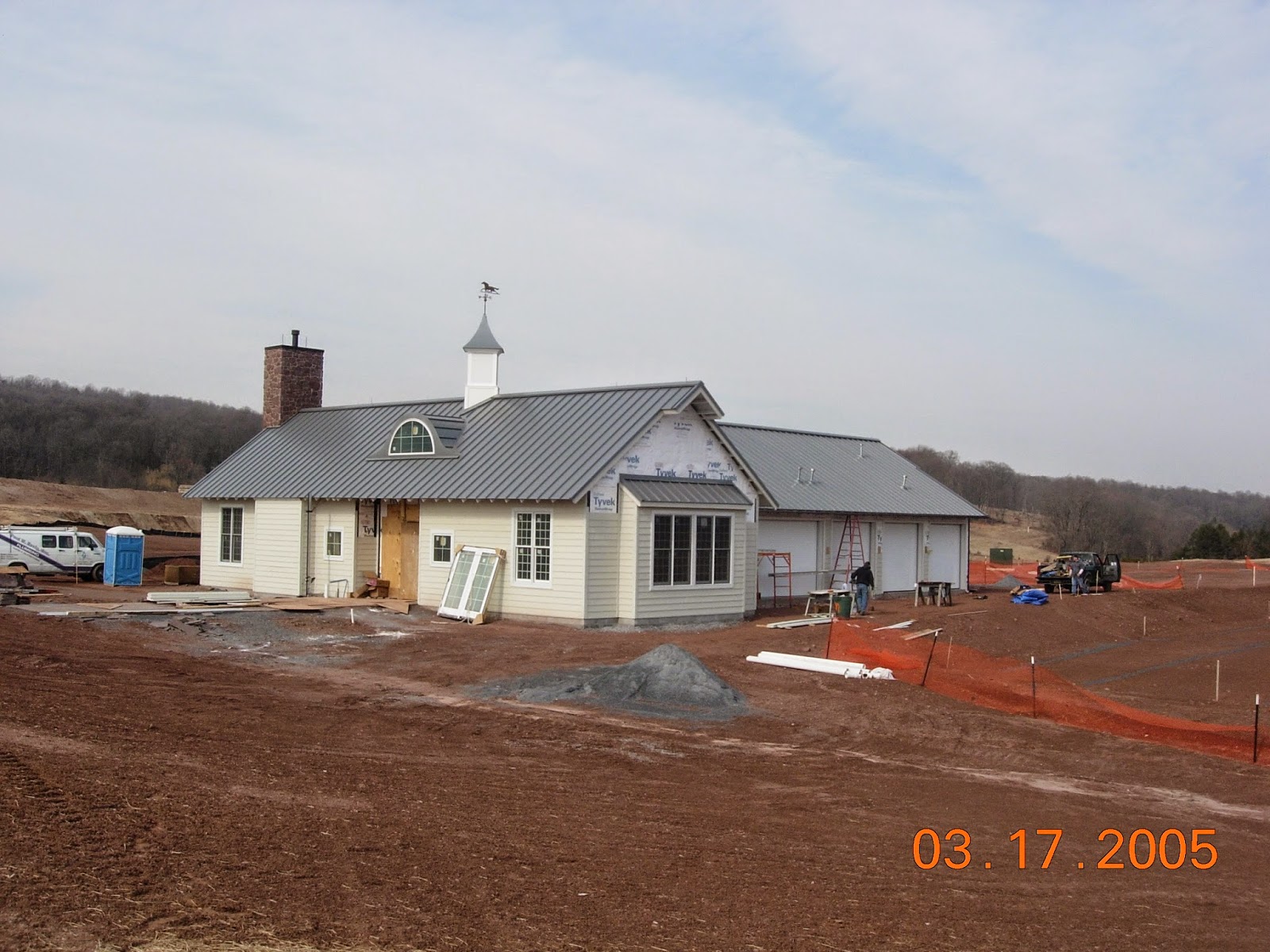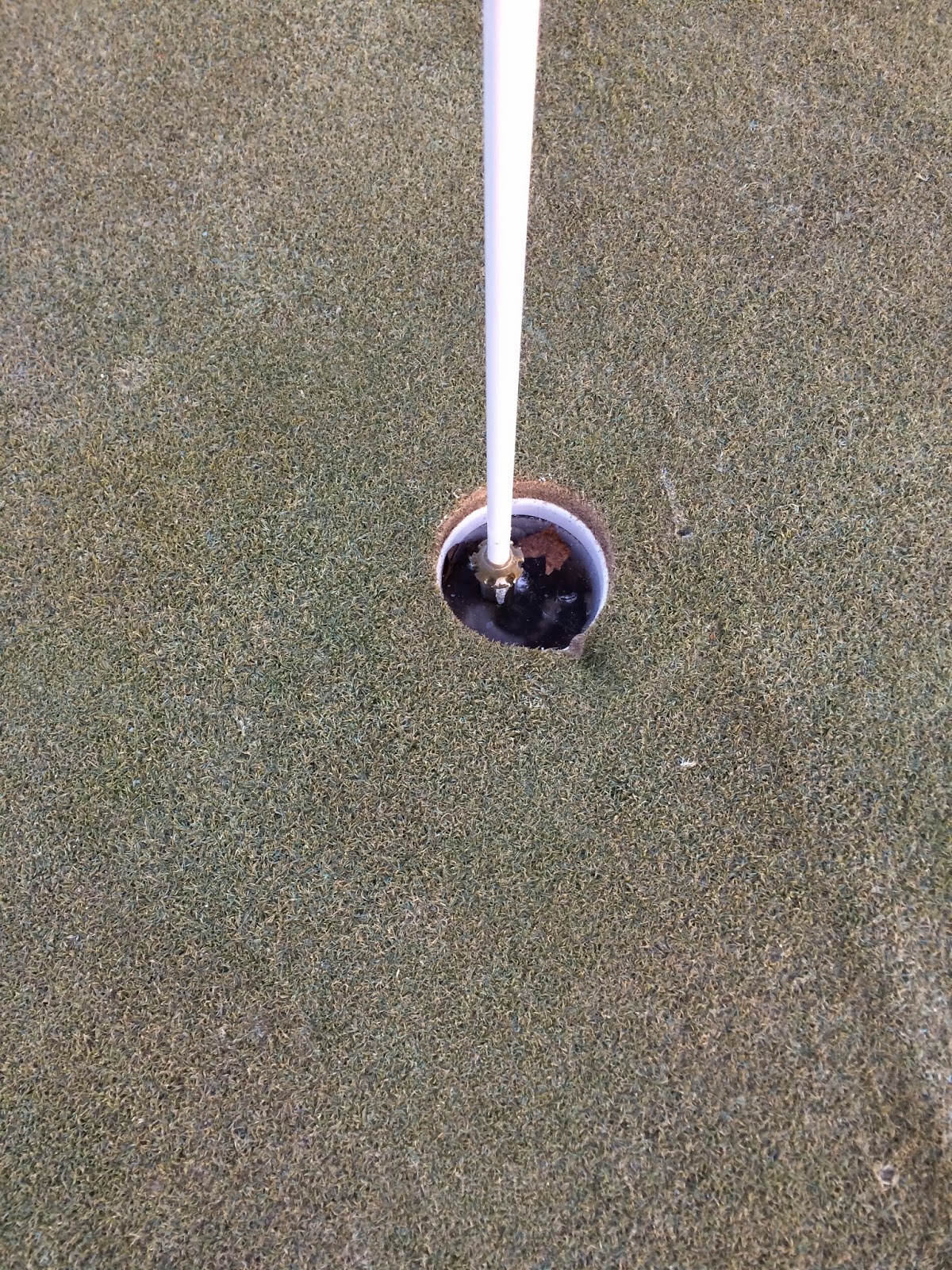
From the picture above it is hard to believe it is March 20th! I was hoping this post would be describing how much work was getting done! The course had finally started to appear from the winter snow cover and we were able to open 10 holes this week, only to be covered up again today.
13 on Tuesday - by Wednesday morning this was clear

The course weathered the winter months well and looked in pretty decent shape when it appeared out from under it's white blanket. The bunkers were inevitably washed out, there are some small debris (mainly leaves and twigs) around and some snow mold in the roughs but that is it. The snow mold in the roughs will grow out once they start to grow so is not an issue and the bentgrass surfaces look great. The crew start to return on Monday, so provided the snow is gone we can address the bunkers and start spring clean up. Once that is done we can get back onto finishing the tree work that was started before the snow arrived.
The joys of winter. The greens are still frozen so the thawed water has nowhere to go. It fills ups the cup and pushed the pin out. All that can be done is wait for it to thaw!
As the spring (allegedly!) approaches the inevitable questions on why we have to aerate right away will arise so it is a good time to revisit the subject of aeration timing.
The simple answer to why core aeration is done around the middle of April is that it is the best compromise between healing time and having the course playable for the bulk of the summer.
The full explanation goes back to when I first started aerating at LedgeRock I liked getting the coring out of the way as early as I could in the spring. March in some of those years was somewhat mild so the greens were completed before the end of the month. The problem was that the soil temperatures were not warm enough for the plant to be actively growing so healing took forever - in some cases 6-to 7 weeks - into the beginning of May - when the soil ultimately warmed up. Needless to say this wasn't ideal playing conditions so aeration was moved later into the spring so it would occur when the soil temperatures were at, or near, the point to support a quick recovery and minimize the time they were not perfect. In some years (like last year) there is a late spring and it can make that recovery take longer than normal; but overall mid April is the best compromise time between the start of optimum growth and the minimum recovery time. The ideal situation is that the April weather is average, to above average, and the greens are healed by May 1st. Aerating any later than mid April pushes the recovery time well into May and into the point of the season where the greens should be perfect.
A teaser from early May last year - we're only weeks away from this!

There is also a secondary issue in having the holes open and that is there is more potential for poa annua encroachment. This is more of an issue in the fall but poa can germinate in the spring also, so minimizing the time the greens are open helps keep it out.
As to the question to why we can't skip an aeration: Based on the greens physical soils tests, overall they are performing exceptionable well for 10 year old greens; this is due to the aggressive aerations that have been done over the years. Reading the summary shows that they recommend a minimum of 20% surface displacement per year. With our current aeration practices we are only just reaching that number. The displacement chart below can give you an idea of what is required. Currently 1/2" hollow tines on appox 1.5x1.5 centers are used which gives 8.73% per aeration or 17.46% per year. The in-season needle tine aerations and the Planet-air (a practice added last year) help make up the remaining of the 20%. The needle tines are 1/8" tines and don't count for much displacement as they are more of a tool to get air to the roots without surface disruption. It is difficult to measure the disturbance the Planet-air due to it's mode of action but it probably adds 3-4% from the two times it's done helping get us to around 21% total. They are recommending adding another 1/4" hollow tine aeration to ensure we hit our numbers......

Here are some USGA links that discuss the timing of aeration.
Easing the Pain of Aeration: The number one thing is timing! http://www.usga.org/NewsSF.aspx?id=21474851472
The Principle of Calculated Risk: Issues from going early http://www.usga.org/RegionalUpdateArticle.aspx?id=21474877214
Green Section Q&A: question 2: http://www.usga.org/Content.aspx?id=21474877610
Core Cultivation, Timing is Everything: A very nice article discussing why timing is key. http://gsr.lib.msu.edu/2010s/2010/100332.pdf
It has also been discussed a few times in the blog, although most of it covers the issues with the colder weather delaying healing.
Cold temps and healing from last spring: http://ledgerockgcmaintenance.blogspot.com/2014/04/4-25-14.html
So why do we aerate and why now: I probably should just take the second part of this and separate it out into it's own post: http://ledgerockgcmaintenance.blogspot.com/2013/09/so-why-do-we-aerate-and-why-now.html
I understand the frustration of the timing of this years aeration with the GAP matches but if we delay it until later, it will have a knock on effect to the May schedule. If the weather cooperates (i.e. the snow goes and the ground thaws) and we go early, the soils will not be warm enough and we will have cored greens for a longer period. I think that most, if not all, the other courses playing in the GAP matches will be in the same boat.
Lastly to continue the theme of where LedgeRock was 10 years ago.
The first bridge (13) was completed

The Driving Range was taking shape

The main parking lots were being built

The Learning Center was taking shape

As always if you have any questions please email me: alan@ledgerockgolf.com

